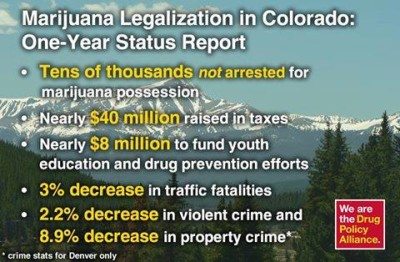
Our family has lived all over the country, following my husband’s job. With each new location I made an effort to get to know the cultural climate of our new home town. In Utah I read up on the Mormon faith. When we landed in Upstate New York, we explored the Big Apple as much as possible. Then four years ago we moved to Colorado. It was immediately apparent that I needed to research the topic of marijuana.
Medicinal use had been legal in my new state since the year 2000. The summer we moved to town the country was gearing up for a presidential election and the state was gearing up to see if its residents would be some of the firsts in the country to allow legal recreational use. By the first week in November it came to be. We were now parenting our four children in the land of legal weed.
This lead to an exploration of not only how marijuana can be used by amputees like myself to mitigate pain but also, unexpectedly, how it might be used to treat one of my children for an unexpected and difficult condition. The answers were eye-opening.
I’m a child of the 70s and 80s. I grew up hearing Nancy Reagan’s voice in my head, chanting “Just Say No.” From the pulpit at my hometown church to the classroom discussions at school, I heard the message. Drugs were bad and marijuana was as equally devastating as heroin. Drugs were drugs. And drugs were bad.
And then a few decades later I found myself living in a state where one of those drugs was being treated much like alcohol—for adults only but readily accessible. I had to sort out the facts and make a decision, if not for my own peace of mind, for the parenting philosophy that would carry me forward. I read through websites, on both sides of the issue. I watched well done documentaries. I read the few contemporary books I could find on the subject. And the facts I found surprised me.
In the early years of our country, marijuana was often used medicinally (called Cannabis), as well as recreationally. There was prejudice attached to it in the 1920s, as many people associated it with the Mexican migrant workers (where the name was changed to marijuana). The 1936 film Reefer Madness clearly spelled out to parents that the drug would make their teens capable of horrific crimes and ruin their lives.
A decade later, the La Guardia Report told the opposite story. This government report found that marijuana in fact did not have catastrophic consequences. It was not a gateway drug, leading people to harder drugs. It was not the cause of inner city crime. Its negative reputation was unfounded.
In the 60s the cultural climate relaxed the views on pot even further. The upper middle class used it socially. Both Presidents Kennedy and Johnson released reports that stated pot didn’t lead to violence or steer people toward harder drugs. The harsh laws from earlier decades were repealed and it was widely accepted that pot had inherited an undeserved reputation.
In 1972 the bipartisan Shafer Commission studied the laws on marijuana and decided that personal use of the drug should be decriminalized. In the decade of the 1970s, eleven states decriminalized its use.
Ironically, in the summer of 1970, the Assistant Secretary of Health, Dr. Roger O. Egeberg recommended the plant be classified as a schedule 1 substance, meaning it was a highly addictive drug with no medicinal value. This recommendation came about not from proof that the drug was dangerous, but because there was uncertainty about it. For the past 45 years it has remained classified this way, clouding every legal decision that needed to be made.
Earlier this year the Surgeon General of the United States, Dr. Vivek Murthy, admitted that cannabis can make a positive difference in some medical cases, which is in direct opposition to the definition of a schedule 1 drug (no medicinal value). Minimally, it’s time to change the classification of this plant.
Then came the era of the Reagan 80s, and several drug related Acts that once again made pot the bad guy. In the Comprehensive Crime Control Act of 1984 the penalty for possessing 100 grams of marijuana became equal to the possession of 100 grams of heroin. Nancy Reagan took up the cause and filled our classrooms with the “Just Say No” campaign. We were back to the idea that drugs were drugs. And drugs were bad.
In my research I found reports that showed, over and over again, marijuana needed its own category. And it didn’t belong up there with Walter White’s blue meth. Cocaine, which is actually a schedule 2 drug, meaning it’s not as scary as marijuana, has a dependency rate of 20%. That means a fifth of the people who try it will become addicted. The dependency rate for heroin? About 25%. Here’s the good one—the dependency rate of tobacco? A whopping 30%.
Now let’s go back to the bad guy marijuana. Dependency rate—less than 10%.
I found many of these startling facts in Dr. Sanjay Gupta’s writings and news documentaries. Dr. Gupta is a well respected neurosurgeon who stood up against legalizing marijuana. Then he did a bit of digging, finding the facts that I did, and totally changed his mind. So much so that he now has a three part series about the truth behind marijuana. I highly recommend you watch them, starting with the first in the series, called “Weed.” In fact, if you click on only one link in this post, click on that one. In a short 45 minutes you will have a nice comprehensive look at the truth about marijuana.
Once I knew more about the drug itself, I realized that I didn’t have a problem with marijuana being legal in my state. I might not chose to frequent the local retail location, but this was one vice that was no more harmful than alcohol (and in many cases much less harmful) and if my neighbor chose to partake, as long as he did it respectfully and within the law, I had no real issue with it. I was pleased when the state came up with easy to understand websites, spelling out what is legal and what is still illegal in our state, especially since so many tourists come here thinking you can buy pot at the local Walgreens (you can’t).
It led to family discussions with our children. The same kind we’d had about alcohol and other things that are not legal for their age group. In the three years since it’s been legal, my teens tell me that it’s not necessarily more available. Large groups of their peers have not fallen off the deep end into the pothead lifestyle, as some folks had predicted. It was available before the new law. It’s available now. The difference is education about making good life choices, exactly like the other major decisions in their lives.
(Let me make one thing very clear—smoking marijuana is not good for developing brains. It changes the brain’s make up. Which is why it is NEVER okay for anyone under the age of 18 to smoke or ingest it. Like alcohol, it is on the list of things we educate our teens about and follow up, as responsible parents, to watch for signs of misuse. But outlawing it for adults doesn’t make it less accessible to teens.)
Here in Colorado we are not suddenly a state of toking zombies, as many of our out-of-state friends and family members might assume. In fact, now that the hubbub of national attention has died down, we don’t think about pot any more than we did before we moved here. It’s there for those who want it. That’s it.

Our state has benefited in many ways. We have collected so many new taxes from the change in law, that if we don’t vote on some options of ways to spend it, taxpayers will actually get money refunded back to them this fall. The fiscal reports from last year show that for the first time in our country’s history, a state has made more tax revenue from marijuana than it has from alcohol. A lot more. Like 42 million versus 70 million. Much of this money goes toward rehabilitation and drug enforcement but a lot of it is going towards schools.
But even before I came to my own personal conclusion about recreational marijuana use, the topic of medicinal hit very close to home.
For almost a dozen years I’ve been an amputee. I am involved with many amputee support groups, locally and online. I hear what my fellow amputee friends are chatting about and what obstacles they face in their individual journeys. Pain is a big one.

There are several types of pain associated with being an amputee, phantom pains being the most common. I am fortunate to not have phantom pains (lingering zings or aches associated with the severed nerves from the operation). But many of my friends do. And many of them are shackled to hard core medications to help them cope.
The addicting nature of narcotics has been the cover story for many of the major media outlets. It continues to be a huge problem in our country. Narcotics are great when they can be used for a short time. But the long term use many amputees require not only put them at risk for addiction, it can wreak havoc on their internal organs. If there was any way to cope without hard core pharmaceuticals, most amputees would jump at the chance.
This is where marijuana changes everything. This is a plant. Even taken in small doses it can provide significant relief that negates the need for handfuls of pills. In fact, the skill of today’s growers makes it possible to walk into a pot store and buy a specific strain that is bred to relieve pain. You don’t even have to smoke anything. The variety of options for edibles (gummies!), oils, and lotions is astounding. This poster, that hangs in my local pot shop (Yes, I went into a pot store for this article. You’re welcome), breaks down which strains to purchase for each ailment.

Many of my fellow online amputee friends are fiercely jealous that I have the option in my state and they have only pain pills to turn to. I hope to see a day in the near future where no matter where you happen to live, you can have the option of such simplistic pain relief. While the idea of recreational marijuana was a non-issue to me, I quickly became passionate about legalizing medicinal use, in every state. For every person who was in pain or suffering.

Photo: Judy Berna
A new study has come out that strongly suggests that marijuana can actually delay rejection in organ transplants. It can buy patients time for their bodies to accept the new organ. Another startling fact, the incidents of overdoses on prescription pain killers has dropped 25% in states where medicinal marijuana is legal. That’s a lot of people—husbands, wives, moms, dads—who were still there when the holidays rolled around in December. All because they were able to use a natural plant to get their pain relief, and ditch their prescription drugs.
Then it got even more personal. Soon after we moved to Colorado, our oldest child started having seizures, one of the horrible complications related to a case of Chronic Lyme Disease, contracted in the days we’d lived in New York. She’s never gone more than six months without having a grand mal seizure. With every episode she gets higher doses of pharmaceuticals.
As if it’s not tragic enough that she lives with the side effects of regular seizures, she also copes with complications from the medications prescribed to subdue them. The more I saw articles on how a byproduct of the marijuana plant, CBD oil, could help calm seizures, the more I knew we needed to try it.
Through a website called Realm of Caring, I saw story after story of people who were able to completely give up their high doses of pharmaceuticals and get complete relief from their seizures, from simply replacing the drugs with specific doses of CBD oil.
An 8-year-old named Charlotte paved the way. A few years ago, when her parents had tried every other option to ease the seizures that attacked her body 300 times a week, they finally turned to CBD oil. She was five when they gave her the first dose. She didn’t have another seizure that day. Or the next. In fact, she only had one that entire week. The strain of oil that helped Charlotte is called, appropriately, Charlotte’s Web. It’s changing the lives of people who have seizures. You can see her, nearly seizure free, in the news report by Dr. Gupta mentioned earlier in this post.
The ironic part of this amazing oil is that all of the THC is strained out of it. THC is what causes the high that most people get from marijuana. Yet until recent changes in the law, most seizure patients couldn’t legally try CBD oil. It was lumped under the umbrella of marijuana.

My daughter recently introduced CBD oil into her daily routine. We’ve seen promising results already. Her last seizure was a small fraction of the size and magnitude of every seizure she’s had in the past. I’m confident that once we find the right dose for her, she might have hope for a future that is not tied to high doses of pills. This will not only affect her daily quality of life, but her plans to have a family of her own. This marijuana law quickly became about so much more than agreeing to let my fellow Coloradans have a chance to get high on their day off.
There will always be some who disagree with it on religious grounds. I have some very close friends who are police officers and their opinions hinge on the experiences they’ve had in their field. I can respect that. But when it comes to raising my kids in a climate of legal pot, I’m no longer nervous. And when it comes to the value of having medicinal weed available to those who might need it, I’m downright zealous. I’ve seen firsthand how a simple green plant, with wide open leaves, can change the quality of life, and the hope for the future, for people I care about. That’s enough for me.





Good Afternoon
We would like to invite you to list your business with All Vape Stores, a leading global CBD and Vape Shop Directory.
All CBD Stores is the world’s first CBD Shop Directory (also covering local vape shops) that is helping people to find their local vape and CBD shops.
At the moment, All CBD Stores receives in excess of 80,000 highly-targeted monthly visitors from the United Kingdom and the United States. This is partly thanks to our designated vape and CBD blog that covers the latest vape and CBD product reviews, guides and industry news. Likewise, we are also sending out regular weekly newsletters to our subscribers.
A listing on All CBD Stores can help to grow your brand’s exposure, site traffic and sales. With the fierce competition in the CBD industry and the clampdown on advertising, a listing on All CBD Stores is an excellent choice that will help you to achieve your business objectives.
You can view our listing packages here: https://allcbdstores.com/
We look forward to seeing you on the mothership.
Best wishes
All CBD Stores Team
Hello. I also smoke weed and I don’t think that it is something bad. Alcohol is much more worst for health!
Good day. I also don’t think that there can be some problems. Many people have problems with health and only weed can help to relieve suffering! My mother suffer from stress, so I often order necessary weed products in Weed Shop in UK https://weedzy.co.uk/ they guarantee quality and effect!
I think that purchase CBD oil this is very cool but you need to pay attention to the quality of the product you buy. I take this oil because I often has a headache. But I am sure that this oil should be bought only in trusted stores.